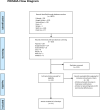Indoor residual spraying for the control of visceral leishmaniasis: A systematic review
- PMID: 35587498
- PMCID: PMC9159594
- DOI: 10.1371/journal.pntd.0010391
Indoor residual spraying for the control of visceral leishmaniasis: A systematic review
Abstract
Indoor Residual Spraying (IRS) is one of the interventions to control the vectors of Visceral Leishmaniasis (VL). Different insecticides are used in affected countries, also in the Regional Initiative for the Elimination of VL in South-East Asia. This systematic review assesses all available studies analysing the effectiveness of IRS on the key vectors of VL. The systematic review followed PRISMA guidelines, with a broad search strategy, applied to seven key databases. Inclusion criteria were studies focusing on 1) Visceral leishmaniasis 2) Indoor Residual Spraying (IRS) or synonyms, and 3) all primary research methods. 21 studies were included, five cluster randomised controlled trials (cRCTs), one randomised controlled trial (RCT), 11 intervention studies, also included were three modelling studies and one survey. 19 out of 21 included studies were published between 2009 and 2020. 18 of the studies were conducted in the context of the Regional Initiative. Effects of IRS on vector populations are positive, confirmed in terms of effectiveness and by the availability of studies. Deltamethrin and alpha-Cypermethrin reduce total sandfly counts, and/or Phlebotomus argentipes counts by up to 95% with an effect of a minimum of one month. Prolonged effects are not regularly seen. DDT has been used in India only: whereas in the 1990s a good effect could be measured, this effect waned over time. Two intervention studies, embedded in larger programmes in 2019 and 2020, replaced DDT with alpha-Cypermethrin throughout the study. Combinations of different interventions are not systematically researched, however showing some promising results, for example for the combination of IRS and Temephos. Constant monitoring of insecticide resistancies and quality delivery of IRS are confirmed as key issues for programmes. No human transmission data are available to directly relate an effect of IRS-although modelling studies confirm the effect of IRS on human transmission. Concluding, IRS continues to be an effective intervention for Phlebotomus argentipes control. Delivery requires constant monitoring and quality assurance. Further studies need to assess IRS in different geographical areas affected by VL and combinations of interventions.
Conflict of interest statement
The authors have declared that no competing interests exist.
Figures
References
-
- Le point sur la situation mondiale de la leishmaniose, 2006–2015: un tournant dans la surveillance de la maladie. Wkly Epidemiol Rec 2017; 92(38):557–65. - PubMed
Publication types
MeSH terms
Substances
LinkOut - more resources
Full Text Sources
Miscellaneous


